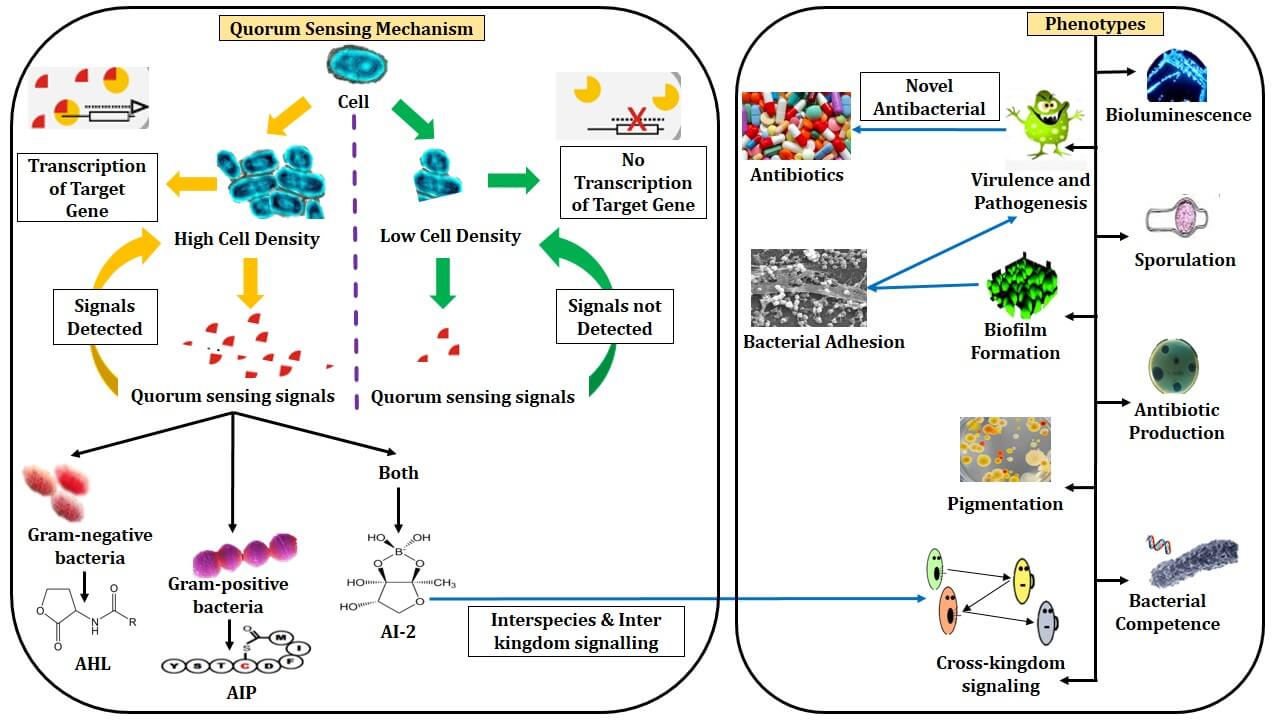For a long time, there was an assumption that bacteria exist as individual cells. The discovery of intercellular ‘talking' among the bacteria led to the realisation that bacteria are capable of synchronised activity that was once believed to be restricted to multicellular organisms. This talking process is known as quorum sensing.

The above figure represents the mechanism of quorum sensing where the cell communication process takes place with the help of extracellular signalling molecules called autoinducers. The bacteria recognises and responds to these signals at a minimal threshold concentration. As the bacterial population density increases, the autoinducer accumulates in the environment and the bacteria monitors this information to track changes in their cell densities and co-operatively modify the gene expression. The gram-negative bacteria communicate via acyl homoserine lactones (AHL) while in gram-positive bacteria, peptides are the signalling molecules which are also known as autoinducing peptides (AIP) or pheromones. A third type of signalling molecule known as autoinducing peptide-2 (AI-2) is present in both gram-negative and gram-positive bacteria which is responsible for interspecies and inter kingdom communication process.
Quorum sensing controls a variety of signalling pathways including biofilm formation and adherence to host tissue which can then lead to virulence and pathogenesis. Thus the virulence mechanism of pathogenic bacteria has led to increase in quorum sensing research being studied at the molecular level. In the last few decades, much has been discovered about the mechanisms used by bacteria to communicate and control virulence traits. However, new molecules and their effects on microbial virulence are being investigated. It is clear that the interaction between quorum sensing and bacterial virulence represents a promising area from which new, effective antivirulence drugs can emerge. The challenge ahead lies in utilising this concept into real therapeutics that could boost the effective usage of antibiotics.